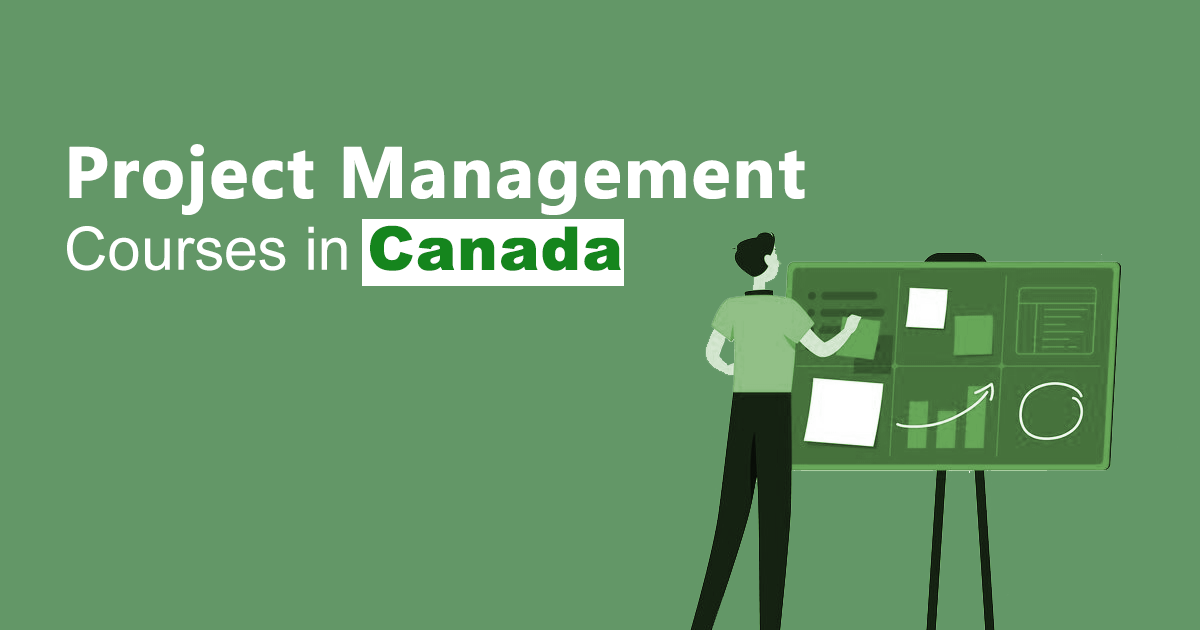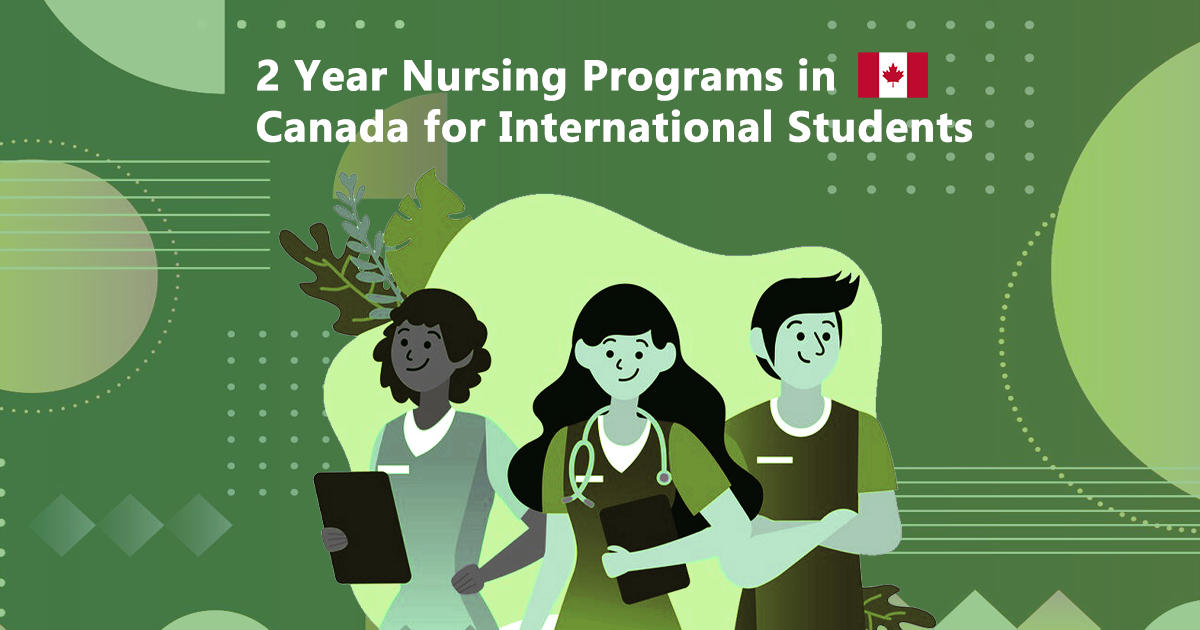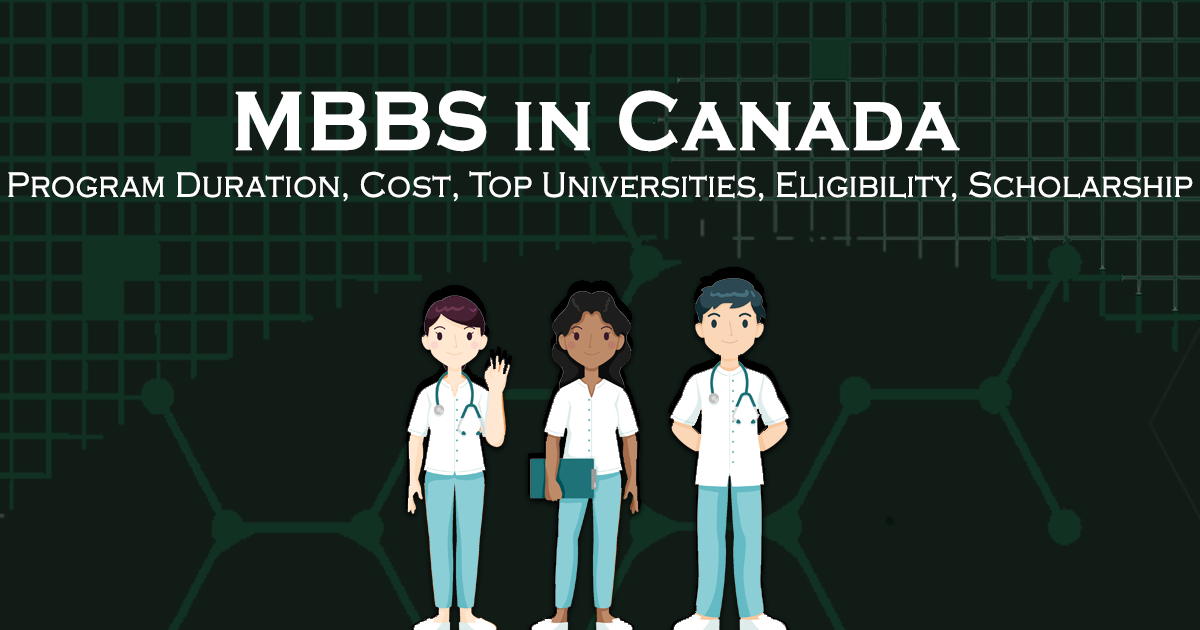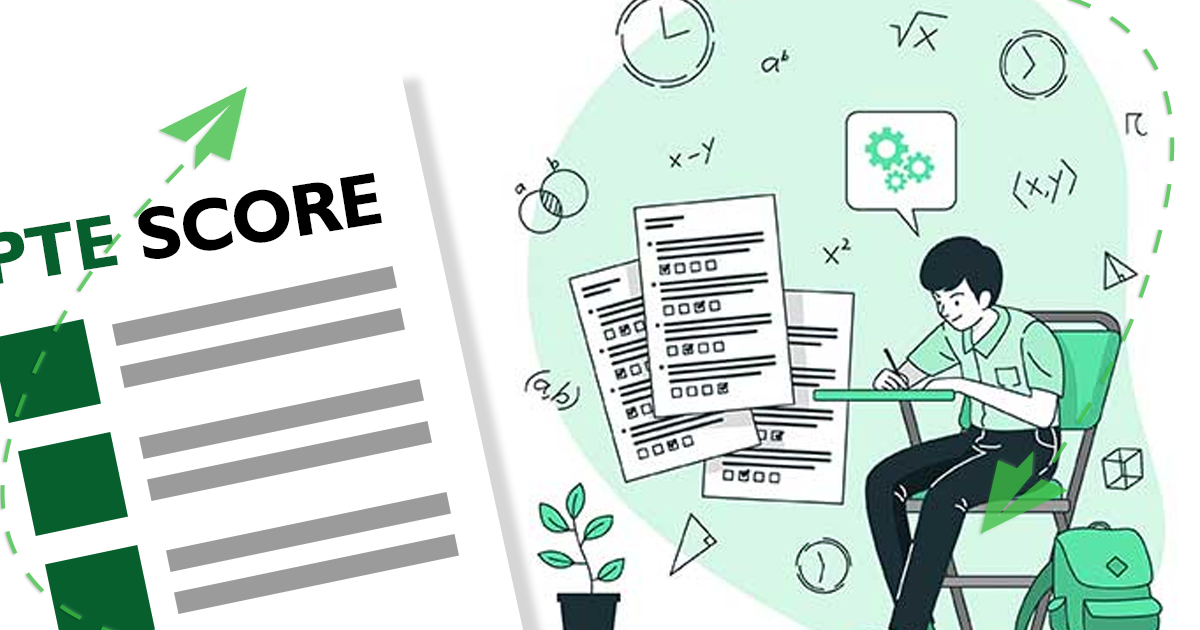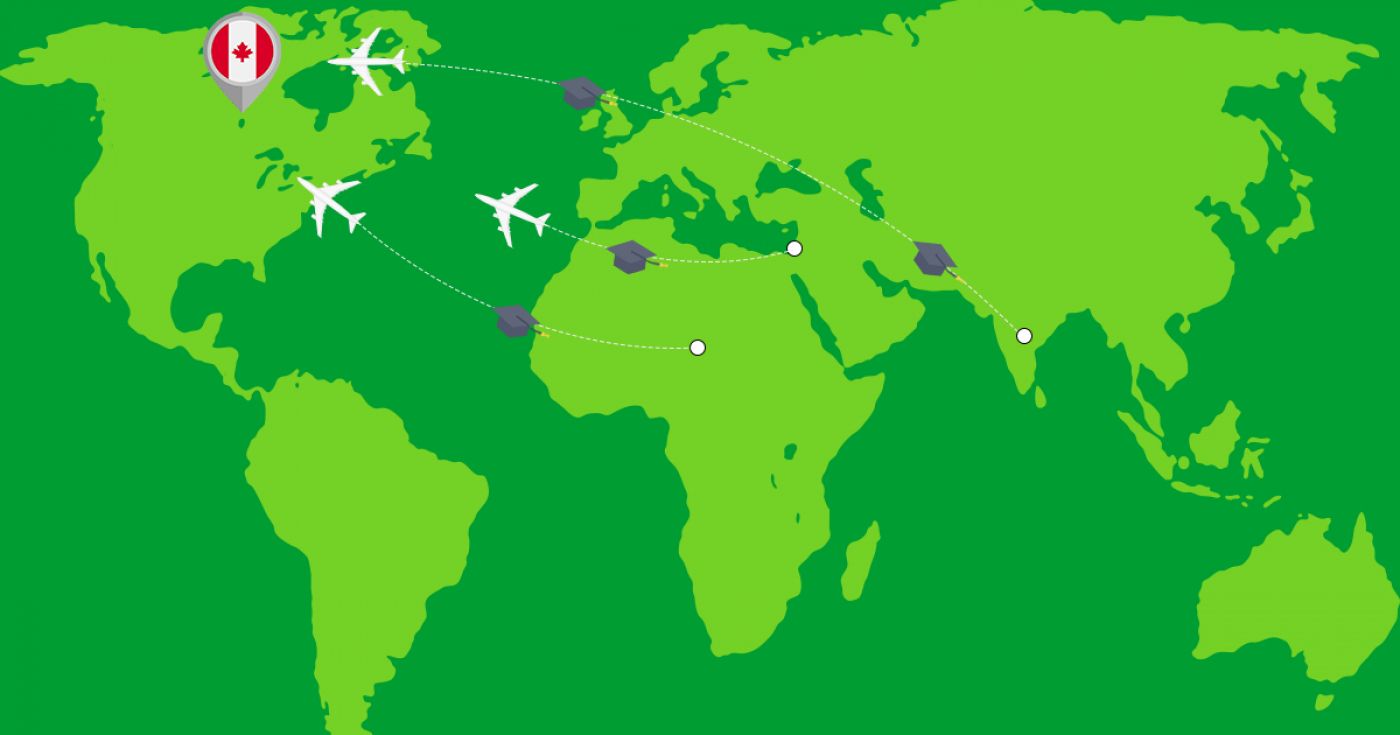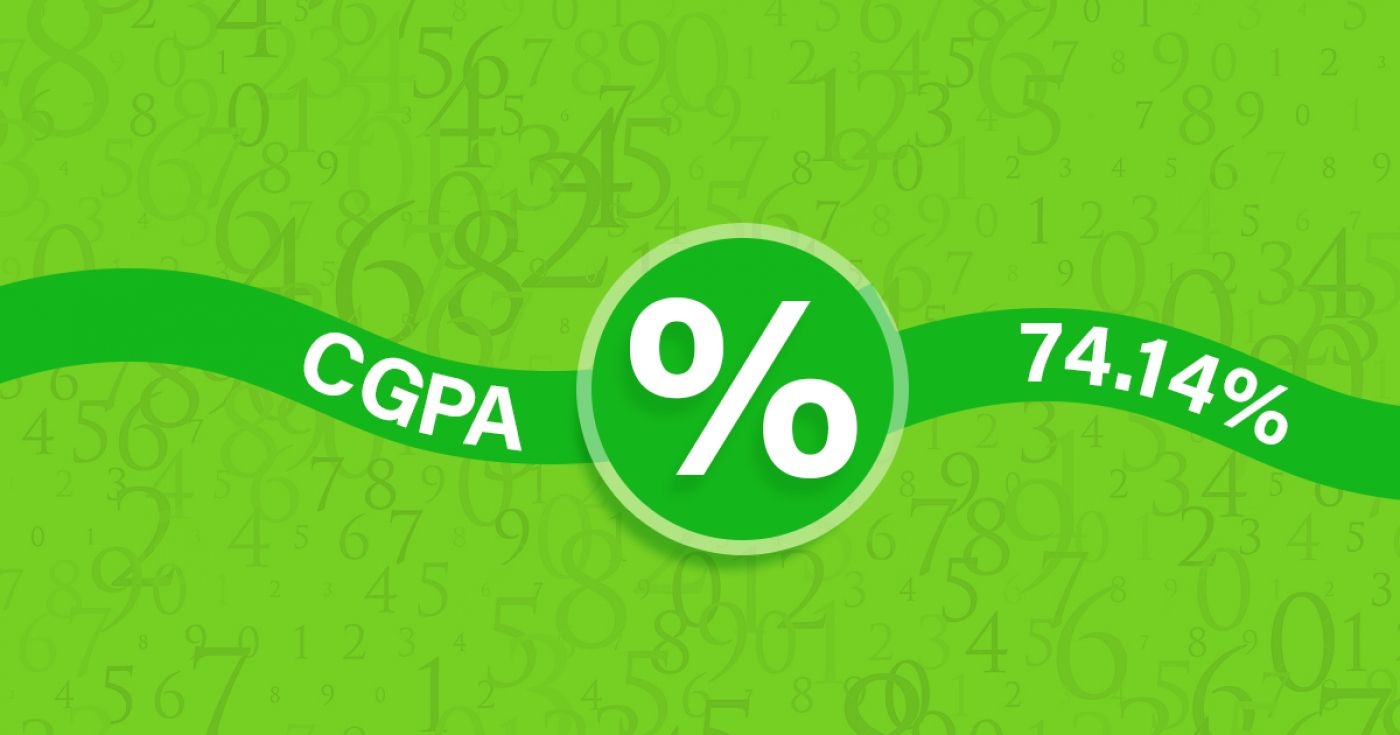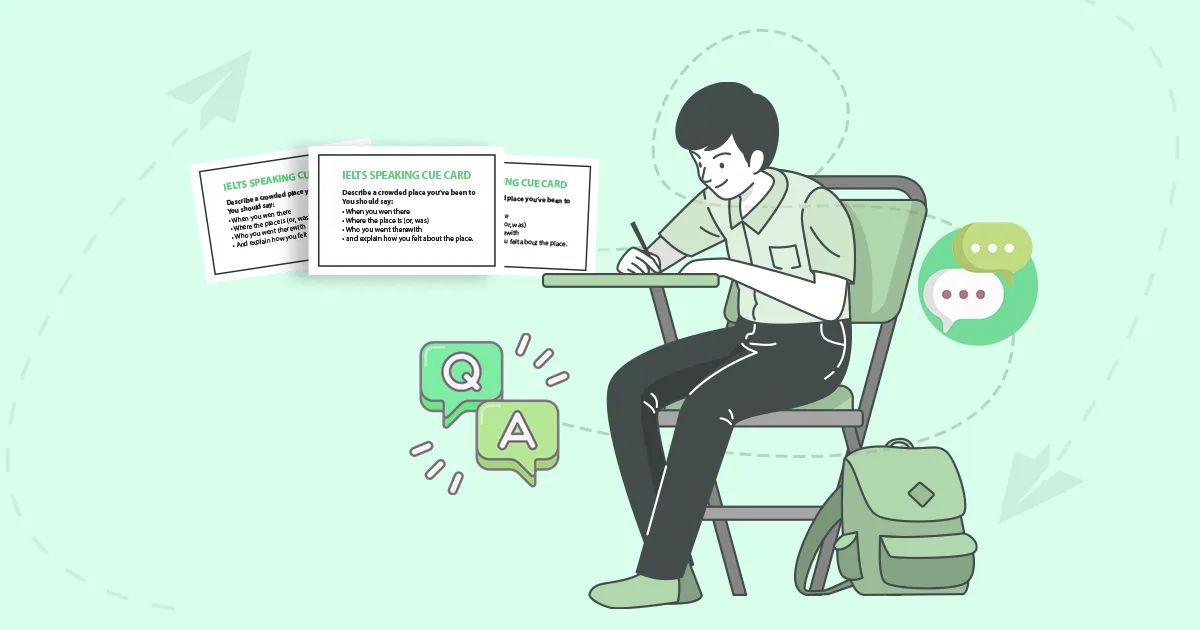Bachelor of Industrial Design (Honours)
at Humber College North Campus Canada
Overview
Industrial designers design products for consumers. Examples include sports footwear, headphones, wearables and automobiles. Graduates of the program are in high demand for the practical skills gained through the program’s hands-on learning environment. These skills include sketching, digital graphic rendering, model-making and computer-aided design (CAD). The program is project driven, and many of the design projects will involve industry collaboration to ensure real-world relevance.
Students elect a design specialization in Year 3 in one of:
- Automotive design
- Product design or
- Interaction design
Automotive designers design the appearance (styling) of motor vehicles including automobiles, motorcycles and off-road vehicles. Humber is the only industrial design program in Canada that offers an automotive design specialization.
In product design, there is more emphasis on the method of finding a solution to a user’s problem in order to make doing a task easier or make the user experience with the product more satisfying.
Interaction design is a new offering in the program which recognizes that more and more physical products are integrating a digital component, including touch screens or voice activation.
Learning Outcomes
- Upon successful completion of the program, a graduate will:
- Meet the professional criteria as established by the ACIDO Charter (The Association of Chartered Industrial Designers of Ontario), demonstrating core competencies in skills, knowledge and design methodology in industrial design meeting.
- Design, document and communicate high quality interior design propositions of varying size, scope and complexity employing principles of evidence-based design methodology.
- Explain how products work; how products can be made to work better for people; what makes a product useful, usable, and desirable; and how products are manufactured and serviced.
- Select and employ appropriate visual languages to investigate, analyze, interpret, develop and articulate ideas for two and three-dimensional projects.
- Produce sophisticated design proposals emphasizing three-dimensional quality of space achieved through architectural detailing.
- Communicate concepts and requirements to other designers and colleagues who work with them, and to clients and employers. This need to communicate draws upon: verbal and written forms, two-dimensional and three-dimensional media, and levels of detailing ranging from sketching to engineering drawings.
- Employ computer-aided drafting (CAD), computer-aided industrial design (CAID), and appropriate 2D and 3D graphic software to create graphic presentations and marketing materials.
- Integrate sustainable practices in the design process and demonstrate leadership by educating users in these principles.
- Analyze the complexity of forces – economic, political, physiological, sociological and technological – which influence the design of the physical environment.
- Incorporate principles of user-centered design, human factors and ergonomics in design solutions.
- Select appropriate methods and materials to achieve the technical functionality and aesthetically pleasing built environment.
- Select the appropriate process(es) and materials for manufacture for a given production volume.
- Support the marketing function with design strategy supported by graphic/3D materials.
- Demonstrate an understanding of the relationship between human behaviour and the built environment and the implications in preparing design solutions.
- Assess the implications for interior design presented by key developments in current and emerging materials, media and technologies and in interdisciplinary approaches to contemporary design practice.
- Source information on copyright, mechanical patents, and protection of intellectual property, as applied and practiced in the professional field of industrial design.
- Develop a business case for and present design solutions to a variety of stakeholder in keeping with professional standards and practices.
- Employ effective and professional communication skills and techniques to interact, negotiate and undertake collaborative efforts including meaningful discussion of one’s work in an open studio environment, with audiences, clients, markets, end-users and team members.
- Work collaboratively with clients to develop an understanding of the product requirements, leading to a design brief.
- Confidently employ appropriate professional accountability, personal and business ethics demonstrating competency of industry practices.
- Work in a team effectively, utilizing skills of collaboration, negotiation, compromise and conflict resolution.
- Employ appropriate conventions of measurement, scale, site measuring, drafting and volumetric manipulation through a variety of manual and digital modeling techniques.
- Design to exceed the minimum standards of applicable laws, codes, regulations, and practices that protect the health, safety and welfare of the public.
- Speak clearly and persuasively for design concepts and resources.
- Plan and manage projects, demonstrate good time management skills, be a self-starter, and show resourcefulness.
- Employ both convergent and divergent thinking in the process of observation, investigation, speculative enquiry, ideation, rationalization and implementation of design solutions.
- Source, navigate, select, retrieve, evaluate, manipulate and manage information from a variety of sources, both primary and secondary.
- Conduct themselves with honesty and integrity, demonstrating professional accountability.
- Employ a variety of methods of design to develop design solutions.
- Analyze information and experiences in order to articulate an academically structured, sustained and well-supported argument supporting a design issue or creative interior design solution.
- Identify and analyze the customer needs of an identified target market.
- Find relevant information that informs the design process, employing a number of techniques and skills including: observation, expert interviews, market information, and various digital search techniques.
- Employ a variety of ideation techniques, including: sketching, brainstorming, rapid sketching, analogy, metaphors, symbols, and form exploration/sketch modeling
- Develop a design solution which meets users’ needs, derived from concept development, product aesthetics (form, color, texture, haptics) that reflects market trends, human factors (including ergonomics, user interaction, and safety), model making, materials and technology, sustainable design, manufacturing feasibility and design validation, and cost.
- Demonstrate good problem solving abilities.
- Develop creative and innovative solutions.
- Demonstrate a strong aesthetic sensibility and style, resulting in design solutions with visual appeal.
- Articulate a well-supported argument justifying a design concept or creative design solution.
- Articulate the difference and relationship between a product’s form and function and the emotional and experiential needs it fulfills.
- Articulate design strategy in the context of business strategy.
Work Placement
- This program includes a work placement of 420 hours in the summer between Year three and four.
30
Application Processing Days
Under Graduate
Program Level
Fact & Figures
Full Time On Campus
Study Mode
48
Duration
Humber College North Campus
Location
Bachelor of Industrial Design (Honours) Assistant Fee
$20485
Tuition Fee
$12000
Average Cost of Living
$75
Application Fee
Bachelor of Industrial Design (Honours) Admissions Requirements
- Minimum Level of Education Required: To be accepted into this program, applicants must have Grade 12 / High School Diploma or equivalent including these required courses:
- Grade 12 English (ENG4U or equivalent) minimum 65 per cent
- Grade 12 Mathematics (MDM4U, MCB4U, MGA4U, MCV4U or MHF4U or equivalent) minimum 60 per cent (Students who do not possess Grade 12U Mathematics or who have achieved a grade below 60 per cent may be considered for admission. Students will be required to complete a math equivalency course during their first semester at Humber. Additional course fees will apply.)
- Four Grade 12 U or M courses in addition to those listed above

Get superfast admissions at top Bachelor of Industrial Design (Honours) institutes in 2024
Benefits of choosing
➤Admission’s guaranteed at Top institutes across the world.
➤Enjoy exclusive application fee waiver’s with Edmissions.
➤Unlimited FREE Counselling sessions with Edmission’s
Experts
➤Get Tips from industry veterans to crack the IELTS exam in 1
week.
➤Assistance with scholarships, loans, forex, student accommodation and visa guidance.
Work Permit Canada
Students who wish to work in Canada require a work permit to do so. A student in Canada can work part-time during the course of his studies and full-time during holidays and semester breaks and post the completion of their course/program.
Rules for getting a part-time work visa in Canada
You can also work part-time on campus at your university.
Work Permit
Duration
Your part-time work permit will be valid for as long as you have a valid study permit.
Working Hours
20 Hours/Week
As a full-time student, you can work for a maximum of 20 hours a week. However, you can work full- time during holidays and breaks.
Document Required to Work in Canada
List
To apply for a work permit, you will need a study permit that mentions that you are allowed to work part-time on campus.
Social Insurance Number
Study Permit
You will need a Social Insurance Number (SIN) to Service Canada. if you wish to work in Canada during the course of your studies. To apply for the same, you need a valid study permit, and you should be a full- time student at a recognized university.

You can work part-time off-campus if you are studying in the Quebec province.
Duration of Work Permit Canada
Your part-time work permit will be valid for as long as you have a valid study permit.
Work Hours Canada
As a full-time student, you can work for a maximum of 20 hours a week. However, you can work full- time during holidays and breaks.
Document Required to Work in Canada
To apply for a work permit, you will need a study permit that mentions that you are allowed to work part-time on campus.
Social Insurance Number
You will need a Social Insurance Number (SIN) to Service Canada if you wish to work in Canada during the course of your studies. To apply for the same, you need a valid study permit, and you should be a full- time student at a recognized university.
Working after completing your course
In Canada, you will need a work permit to get a full-time job in Canada after finishing your studies. You chose a work permit like the Post-Graduation Work Permit (PGWP) if you wish to stay back in Canada and work full-time.
Visit Government of Canada Website for more detail
Post-Graduation Work Permit (PGWP)
The Post- Graduation Work Permit (PGWP) allows you to work for three years in Canada if you have completed a two years degree or more.
Application
how can i apply
You can either apply online or download the form and mail the application along with the required documents. Pay your fee and then wait for the decision to come.
Application Documents Required
List
To apply for the work visa, you need a degree from a recognized and accredited Canadian University along with an intention to stay and work in Canada only temporarily.
When to Apply?
One can apply for the full-time work permit in the first three months post the completion of their course during which the study permit is still valid.
How long does it take?
90 days
You will have to wait for 90 days for the decision on your work permit.
Duration
3 Years
The work permit is valid for 3 years if you have completed a two years degree program or more.
Fees
CAD 255
The fee for the work permit is CAD 255 plus the holder fee and the work permit processing fee.
Monthly Wages
CAD 1,600
An applicant is guaranteed a minimum salary of CAD 1,600 per month while working in Canada. This amount though varies on the job and the province you are working in.
Work Hours Canada
No Limit
There is no maximum limit, and you can work for as many hours as you want on the full-time work permit.

Required Documents
List
To apply for the work visa, you will need the following documents:
- Forms: IMM 5710, IMM 5476 and IMM 5475;
- Graduation Proof
- Proof of payment of work permit fees
- Copies of your travel and identification documents, passport pages and current immigration document.
Till a decision is made on your work visa, you can continue to work full time. All you need to have is your completed degree, should have applied for the permit before the expiry of your study permit and you should be allowed to work off-campus.
Information
Disclaimer
The information provided about the work permit is true and complete to the best of our knowledge. All recommendations are made without any guarantee on the part of the author or the publisher. The author and the publisher, therefore, disclaim any liability in connection to and with the use of this information.
Detailed Program and Facts
30
Application Processing Days
Full Time On Campus
Program Intensity
Under Graduate
Program Level
48
Duration
Study Visa
Student Visa For Canada
Any student who wishes to study in Canada requires a student visa. Some of the essential information for the application process is given below.
When Should I Apply?
4 to 6 months
Ideally, one should apply for the study permit at least 4 to 6 months before the commencement of your course/program.
Bank Account
No Need!
There is no need for a blocked bank account to apply for a student visa to Canada.
Duration of visa
Course Duration + 3 Months
The student visa is valid for the entire period of your course plus three months.
Time to Wait for Visa
35 Days
It takes time. It might take up to 35 days post your interview for the application process to complete and for you to finally receive your visa.
Appointment
Required
It varies from applicant to applicant, but one may have to take part in one or two visa appointments, namely a medical examination and a visa interview.
How you can apply
Application Process
An applicant can either apply online or offline by visiting a visa application centre and submitting their documents. After the analysis of your application, you might be called for an interview.
Fee
Visa Fee
The visa application fee for Canada is CAD 150.
Minimum Funds
833 CAD, 917 CAD
You require a minimum monthly amount to be deposited into your account to prove that you can sustain yourself while studying in Canada. If you are studying in Quebec, you need to have a monthly minimum of CAD 917, and if you are studying in a province except for Quebec, you need to have a minimum of CAD 833 per month.
Any other expenses
Required
You will have to pay a medical examination fee and a visa application service fee to the tune of CAD 15 if you visit a visa application centre to apply for your visa.

Medical Examination
Required
One has to undergo a series of medical examinations to be deemed fit for a student visa of Canada. The tests mostly include blood and urine tests, chest x-rays and other organ checkups.
Language Skills
Not Required
one doesn’t need to prove their language skills in applying for a Canadian Visa.
Disclaimer: The information provided about the work permit is true and complete to the best of our knowledge. All recommendations are made without any guarantee on the part of the author or the publisher. The author and the publisher, therefore, disclaim any liability in connection to and with the use of this information.
Other Courses by Humber College North Campus,Canada
Creative Arts & Design
Bachelor of Design (Honours)- User Experience
Design is everywhere - built into the environments we navigate, the financial and social services we access, the technology we use, products we consume, and processes we use to do our jobs. Design is providing innovative solutions to the most pressing and urgent problems in today’s world. There has never been a more exciting or relevant time to be a designer.
A wide variety of subjects will guide you through important conceptual and practical design fundamentals such as design theory and practice, prototyping, and usability testing. Design courses will help you develop visual storytelling and communication skills, ensuring that you are equipped with top-notch graphic and user design skills upon graduation.
Our program is designed to respond to the increasing demand for designers prepared to meet the challenges of the 21st century. Grounded by the unifying principle of human-centeredness, this program focuses on how design thinking can be harnessed for social change, improve daily experiences, and make processes and interfaces more human-focused.
48 month
Duration
$ 19615
Tuition
Business & Management
Advanced Diploma in Business Administration - Professional Golf Management
Golf is more than just a game. In Canada, golf is a $15 billion industry that accounts for more than 300,000 jobs. Careers in the golf industry include operating and managing golf facilities, event management, teaching and training, golf equipment sales and custom fitting, travel and tourism, marketing, sales, retail, and catering, among many more.
Humber’s Business Administration – Professional Golf Management advanced diploma program provides a solid foundation of transferable business skills in accounting, communications, computer applications, economics, entrepreneurship, finance, human resources, law, marketing, management, mathematics, statistics and business strategy. Then it adds industry-specific skills and knowledge you will need to start your career in this dynamic industry including courses in golf operations, principles of golf, turf management, golf course design, bar and restaurant operations, retail management, and tournament operations and event planning.
Our students have access to our world-class Golf Lab facility, including three golf simulator bays, putting green, golf club build and repair shop, and proshop. Within this facility, our students will gain hands-on experience with the latest golf technology, software and equipment. They will also receive golf coaching, club fitting and swing analysis from our team of PGA of Canada members.
At Humber, you will learn from the pros – leaders in the golf industry who are keen to share their knowledge and skill to educate and inspire you. Our program is taught by recognized professionals, including Bob Beauchemin – former PGA touring pro, former Canadian Tour Commissioner and National Post top 50 golf instructor in Canada. Our advisory committee is comprised of top golf industry professionals who review our program to keep it on the cutting edge.
Learning Outcomes
Upon successful completion of the program, a graduate will:
- Perform computations associated with compound interest, simple and general annuities, amortization, discounted cash flow and net present value.
- Examine the purposes and activities of organizations of various types, size and structures, and the interrelationship of functional areas within an organization.
- Assess and evaluate opportunities within the Canadian golf industry.
- Develop spreadsheets and apply word processing, presentation software and database skills.
- Prepare and present financial statements and demonstrate basic understanding of their use.
- Apply the principles of composition and the grammar and punctuation skills necessary to the writing process.
- Develop and manage marketing strategies for the professional golf industry.
- Describe and explain human resource policies, procedures and programmers for large and small organizations.
- Manage golf related activities of the Pro Shop.
- Evaluate the economic behaviour and issues that impact Canadian business and apply economic data in decision making.
- Explain the various turf grasses used on golf courses and their benefits.
- Explain the issues to be considered in developing or redeveloping a golf facility.
- Examine how financial information is used in planning and controlling the operations of a business enterprise.
- Evaluate financial markets and the effect they have on nations, governments, central banks and the outcomes of elections.
- Organize and coordinate golf events including golf cart fleet management, prizes, sponsors, food and beverage.
- Explain the four KEYS to profitable restaurant and bar management.
- Engage in the development of a strategic market plan, make decisions regarding the plan and assess the business implications if the decisions.
- Prepare a business plan for a small business enterprise associated with the golf industry.
- Explain Canada’s legal system and law with an emphasis on law in Ontario in business environments.
- Record, present and analyze data used in forecasting and decision-making.
- Develop lesson plans and demonstrate appropriate use of the media to enhance learning.
- Demonstrate the physical skills of golf such as putting, chipping and sand play.
- Explain the structure and purpose of golf associations.
Work Placement
Students in our program enjoy a 100% work placement rate. Our program runs annually on a 6-month in-class/6-month paid work placement schedule - the only one of this kind in Canada, and a key differentiating factor from other programs. Your ability to work two 6-month paid work terms will make you an asset among employers, who are seeking talented professional golf managers. Work placements combine the knowledge and skills you develop in the classroom with practical experience you will gain during your paid work placement.
Humber is actively involved in the golf industry and maintains a large network with the best employers.
36 month
Duration
$ 16414
Tuition
Skilled Trades
Certificate in Plumbing Techniques
Humber’s Plumbing Techniques certificate program is a comprehensive introduction to the trade. You will learn the basics of plumbing including theory, code and blueprints, as well as gain significant hands-on experience. Upon completion of this program, you will have the skills necessary to pursue a career in the plumbing trade.
Water, waste and sewage systems – hallmarks of urban living – require high-level skills to design, install and maintain. In the Plumbing Techniques certificate program, you’ll be introduced to the skills necessary to begin your career as a plumber. Graduates of this program may find a range of career opportunities including apprenticeship, construction industry work, green energy initiatives, and municipal water and sewage treatment. According to BuildForce Canada, an estimated 248,000 construction workers are expected to retire over the next decade. This demographic trend represents as significant loss of skilled workers that will require new workers to replace them. Given this potential shortage, as well as the boom in construction across the country, individuals with plumbing skills are projected to have an advantage in the job market.
12 month
Duration
$ 16414
Tuition
Creative Arts & Design
Bachelor of Interior Design
Humber’s Bachelor of Interior Design degree program balances creativity with sensitive, pragmatic design thinking. Our graduates problem-solve, investigate and explore design environments where people thrive.
Engaging interior design studios enable you to master an evidence-based design process, develop effective presentation abilities and acquire vital professional practice skills. Team collaboration among student groups mirrors industry team practices.
Observational field trips provide opportunities for you to connect classroom theory, such as the perception of space and human interaction, with built environments. In the fourth-year, you will interact with industry mentors to research, develop and document a large scale project from initial concept to construction documentation.
Additionally, a self-directed volunteer project helps connect your passion for design to the community and the design industry. Students have worked with organizations such as the Furniture Bank, Toronto District School Board, youth and women’s shelters, and Habitat for Humanity.
Learning Outcomes
- Upon successful completion of the program, a graduate will:
- Design, document and communicate high quality interior design propositions of varying size, scope and complexity employing principles of evidence-based design methodology.
- Select and employ appropriate visual languages to investigate, analyze, interpret, develop and articulate ideas for two and three-dimensional projects.
- Produce sophisticated design proposals emphasizing three- dimensional quality of space achieved through architectural detailing.
- Integrate sustainable practices in the design process and demonstrate leadership by educating users in these principles.
- Analyze the complexity of forces – economic, political, physiological, sociological and technological – which influence the design of the physical environment.
- Select appropriate methods and materials to achieve the technical functionality and aesthetically pleasing built environment.
- Demonstrate an understanding of the relationship between human behaviour and the built environment and the implications in preparing design solutions.
- Assess the implications for interior design presented by key developments in current and emerging materials, media and technologies and in interdisciplinary approaches to contemporary design practice.
- Employ effective and professional communication skills and techniques to interact, negotiate and undertake collaborative efforts including meaningful discussion of one’s work in an open studio environment, with audiences, clients, markets, end-users and team members.
- Confidently employ appropriate professional accountability, personal and business ethics demonstrating competency of industry practices.
- Employ appropriate conventions of measurement, scale, site measuring, drafting and volumetric manipulation through a variety of manual and digital modeling techniques.
- Design to exceed the minimum standards of applicable laws, codes, regulations, and practices that protect the health, safety and welfare of the public.
- Employ both convergent and divergent thinking in the process of observation, investigation, speculative enquiry, ideation, rationalization and implementation of design solutions.
- Source, navigate, select, retrieve, evaluate, manipulate and manage information from a variety of sources, both primary and secondary.
- Analyze information and experiences in order to articulate an academically structured, sustained and well-supported argument supporting a design issue or creative interior design solution.
Work Placement
You will apply your hands-on, job-ready skills with a 420-hour paid work placement. Career management workshops help you to develop effective job search skills. You will find your own work placement with the support of work placement consultants and faculty.
48 month
Duration
$ 20485
Tuition
Creative Arts & Design
Advanced Diploma in Graphic Design
Humber’s Graphic Design advanced diploma program develops creative and strategic designers who execute for a wide range of interactive media such as web and screen, user interaction, motion design and also traditional print products. While learning and mastering design concepts, you will generate creative solutions and produce visuals for effective multimedia communication. As you gain desirable knowledge and skills, you will be exposed to the many topics and tasks required in contemporary design work. You will become strategically and typographically skilled and master digital, editorial, interactive, information, motion and web design techniques. Additionally, relevant programming and entrepreneurship knowledge will round out a comprehensive skillset.
As part of our interaction and design common platform cluster, this program will expose you to many aspects of design and allow you to collaborate with students in related fields. The first semester is shared with the Multimedia Design and Development program, and the first year of this program is shared with the Web Design and Interactive Media program. Your exposure to different types of design work and common programming elements will enable you to investigate your options and choose a focus prior to your second year of study.
You will explore the many facets of graphic design and be instructed and trained on industry-based technology and software. Cross-disciplinary projects will allow you to develop collaborative and teamwork skills while preparing you for workplace environments. This program includes the unique opportunity to work with BuildingF, our in-house creative & business communications hub, working on real projects for clients while building your portfolio and professional contacts.
36 month
Duration
$ 19557
Tuition
Social Sciences
Diploma in Funeral Director Class 1 (Embalming)
Humber’s Funeral Director Class 1 (Embalming) diploma program draws students from around the world, preparing them to make a difference in the lives of people who are grieving the loss of a loved one. This is the only English-speaking Funeral Service Education program in Ontario.
Courses are designed with industry input, ensuring that what you’re learning is current and relevant. You will learn all aspects of funeral home operation, as well as the practical and theoretical sides of funeral service. Embalming lab courses will prepare you for the technical side of the program, while courses in issues of grief and bereavement prepare you for the emotional side. Courses in arranging, ethics and embalming will enable you to explain all options to families. Business courses will help you understand the challenges of operating a business.
Learning Outcomes
Upon successful completion of the program, a graduate will:
- Provide an accurate explanation of the rationale behind his/her actions, grounded in a comprehensive understanding of the relevant policies, practices and financial implications that guide the performance of the scope of practice of the Funeral Director – Class 1 (embalming) role.
- Communicate clearly, sensitively and respectfully with potential purchasers all relevant information related to various options and possible implications of decisions made at the time of purchase, as permitted by legislation in the scope of practice for the specified licence classification including:
- Explaining funeral service and disposition options including arterial embalming and restoration
- Explaining clearly and accurately prearranging and prefunding services, product knowledge and merchandise and financial implications
- Managing effectively and sensitively all applicable contractual negotiations and obligations, financing options, and requirements for service and product delivery referring to other licensed professionals when outside the legislative scope of practice
- Communicate and apply an accurate and comprehensive understanding of prearranging and prepayment including investment vehicles, insurance, trust reconciliation and financing of prepaid contracts within legislative scope of practice.
- Conduct oneself in a manner consistent with principles and accepted practices of the funeral sector, using professional language.
- Complete all aspects of business operations for a funeral establishment that provides embalming on site or transfer service, in the capacity of an owner/manager consistent with legislated responsibilities in a legal, ethical, safe and efficient manner across a broad range of predictable and unpredictable contexts.
- Arrange (prearrange) and document funeral services, disposition details, related transactions and follow up services with the legal representative in an effective, professional, caring and creative manner.
- Engage in, and plan for, ongoing personal and professional development, networking/community relations and inter- professional collaboration.
- Provide effective leadership and contribute to the supervision and mentoring of all team members, including licensees, support staff, and/or interns in a professional, caring and creative manner through providing appropriate direction as it relates to the delivery of funeral service.
- Lead, establish, maintain and participate effectively in funeral establishment work teams consisting of licensees, support staff and/or interns demonstrating at all times the ability to learn, grow and work together.
- Care for and handle the deceased respectfully and safely at all times.
- Complete and perform effectively and efficiently all non-embalming preparation processes and arterial embalming and restoration processes.
- Direct funeral services and visitation in a respectful and sensitive manner consistent with the direction of the legal representative.
- Complete prepaid contract related documents and related financial matters in accordance with applicable legislation.
- Coordinate and deliver the selected disposition services and follow up services, effectively, professionally and consistent with, and supportive of, the wishes of the legal representative.
- Make decisions ethically and professionally based on a comprehensive understanding of the knowledge and skills required of an owner/manager of the applicable business licence class pursuant to the Funeral, Burial and Cremation Services Act, 2002 (FBCSA).
Work Placement
The Bereavement Authority of Ontario, the provincial regulator, has approved that students of the program shall complete a one-year work placement before they can be licensed.
To progress into Semester 3, students must start a full-time (paid) work placement in a funeral home after they have successfully completed exams in Semester 2. During Semesters 3 through 5, students complete their learning by distance, and many of their assignments are based on the practical experience they are gaining in the funeral home. Humber assists students to find their placements by working with our industry partners to identify openings. Students are responsible for finding their own work placement with a licensed Ontario funeral establishment.
24 month
Duration
$ 16414
Tuition
Hospitality, Tourism, Wellness Leisure & Sports
Diploma in Fitness and Health Promotion
Humber’s Fitness and Health Promotion diploma program places you at the leading edge of the healthy revolution as you learn from expert, industry-connected faculty. Skills learned go far beyond the fundamentals of exercise to include anatomy, physiology, biomechanics, business administration and marketing, nutrition, injury management, special event planning, and more.
You will combine classroom theory with hands-on training and real-world experience in our unique Humber Centre for Healthy Living for a comprehensive foundation in fitness that includes working with personal training clients and preparing to earn nationally and internationally recognized certifications. You will apply what you have learned by participating in one of the program’s annual special events promoting healthy living, organized and executed by students. Your dedication to wellness and your desire to positively impact lives will propel your career in this interactive and life affirming field.
Please note that certain courses in the Fitness and Health Promotion program require students to participate in fitness classes that will involve physical activity, which may at times be vigorous. Questions about fitness classes and accommodations may be directed to the program co-ordinator (name and email details located in the Contact Us tab).
Work Placement
- You will get hands-on experience as a fitness professional through two unpaid work placements, one per semester in your second year of study.
- Your first work placement takes place on campus where you will perform fitness appraisals and conduct weekly personal training sessions for an assigned client as part of the Humber Centre for Healthy Living (CHL). Along with personal training, students also provide fitness and exercise tips as content for the Humber CHL website.
- Your second work placement takes place off campus, two days per week for 14 weeks (196 hours total) at a fitness facility in a municipal, commercial, private or corporate setting.
24 month
Duration
$ 16414
Tuition
Architecture and Construction
Advanced Diploma in Construction Engineering Technology (Co-op Optional)
Humber’s Construction Engineering Technology program is one of three stackable programs within the Carpentry-Construction group. Along with the Carpentry and Renovation Techniques certificate and the Building Construction Technician diploma, the program introduces you to the carpentry trade, gives you practical experience with trade regulations and with best practices. Students will be able to move from various certificate and diploma programs into the advanced diploma program (including Carpentry and Renovation Technician, Industrial Woodworking Technician, Carpentry and Renovation Techniques, and Building Construction Technician).
The advanced diploma program is designed to explore the construction industry from an engineering and management perspective. You will become familiar with the strategies required for project planning and execution for the commercial-based industry.
Throughout the program, you will learn about compliance with workplace health and safety practices and procedures in accordance with legislation and regulations. You will also learn how to ensure that work is performed in compliance with contractual obligations, applicable laws, standards, bylaws, codes and ethical practices. Coursework will include sustainability practices. Teamwork, leadership, and supervisory and interpersonal skills will be emphasized.
Key learnings will include:
- Collecting, processing, analyzing and co-ordinating technical data to produce project-related documents
- Co-ordinating and facilitating the collecting, processing, interpreting and application of survey/geomatics and layout information
- Selecting and using industry-specific technologies
- Monitoring projects through principles of construction project management
- Preparing estimates
- Performing, co-ordinating and facilitating quality control testing
Optional Co-op
This program offers a co-op option. Co-op work terms enable you to apply your skills and knowledge in a work environment and gain valuable, practical experience related to your program of study. You will learn new skills, learn about the world of work and meet people in your profession.
For students who are accepted into the program, two co-op work terms will take place. The first four-month work term is between Semesters 2 and 3, and the second four-month work term is between Semesters 4 and 5. There are limited spaces in the co-op option. Therefore, you will apply for the co-op option during Semester 1 and be informed of the process by which to apply. While co-op work opportunities are not guaranteed, as students are in a competitive job placement market, participating students will receive a wide range of services to help them find a co-op opportunity.
36 month
Duration
$ 16394
Tuition
Health Sciences, Nursing and Emergency Services
Bachelor of Health Sciences (Honours) in Workplace Health and Wellness
Humber’s Bachelor of Health Sciences – Workplace Health and Wellness degree program is a unique honours degree program, the first of its kind in Canada. You will explore various industry-specific areas including the most current developments in evidence-based interprofessional practice.
This program is multi-disciplinary in nature, drawing from the fields of leadership; mental, physical, and psychological health; business and communication; and knowledge translation. All combined, students acquire the competencies to develop proactive, evidence-based workplace health and wellness programs and health promotion programs. You will develop the skills to promote employee health, workplace culture, employee engagement and retention.
Principles of equity, wellness coaching, diversity, ethical and legal practices, and knowledge translation are the foundation of your learning. A team approach to learning collaboratively is key and is emphasized in the classroom.
Learning Outcomes
- Upon successful completion of the program, a graduate will:
- Evaluate determinants of workplace health and wellness in order to make evidence-informed decisions, which are supported by theoretical and practical knowledge of key health and wellness concepts.
- Employ appropriate methodologies for research, dissemination of information, program planning, implementation and renewal, problem-solving, interprofessional education and collaboration and project management.
- Apply ethical, evidence-informed strategies to develop and sustain inclusionary proactive and reactive practices, which support continuous improvements in workplace health and wellness.
- Communicate health and wellness messages effectively in a variety of traditional and innovative media modalities.
- Develop habits of mind, which demonstrate awareness of the scope and limits of professional practice.
- Demonstrate responsible leadership, accountability and effective collaboration, modeling the embodiment of personal and workplace health and wellness principles.
Work Placement
You will participate in one mandatory paid or unpaid work placement to gain 14 weeks of full-time professional work experience during the summer months between 3rd and 4th year. The placement will occur in diverse settings such as for-profit or not-for-profit enterprises, health and wellness consulting firms, governmental or educational institutions, or other health and wellness environments.
The experience will enhance the theoretical learning in the program, giving you hands-on skills. Work placement experiences might include successfully developing, evaluating and implementing a workplace health and wellness initiative; functioning as a member of a health and promotion team; working at a public health organization in knowledge translation; working in insurance companies and with workplace insurance claims; and health promotion within a long-term care facility.
48 month
Duration
$ 19557
Tuition
Public Safety and Legal Studies
Graduate Certificate in Regulatory Affairs
Humber’s Regulatory Affairs graduate certificate program focuses on developing the concepts, skills and techniques required to work in regulatory affairs in the pharmaceutical, medical device or biotechnology industries. You will gain knowledge of the regulatory system, legislation, procedures and practices which relate to the development, manufacture, quality assurance and marketing of health-related products.
The importance of internationally harmonized regulations and future trends in the industry will be examined by analyzing relevant international and Canadian legislation and regulations. You will study a wide range of regulations and standards including good manufacturing practices, good laboratory practices, good clinical practices, good documentation practices, the International Organization for Standardization (ISO), the Canadian Food and Drugs Act, the Environmental Protection Act, principles of regulatory compliance and inspections, drug establishment licensing, and related standards and guidelines. Teamwork and communication skills are emphasized and you will acquire information technology skills that assist communication and data management specific to regulatory affairs.
You will become familiar with the steps necessary for product submission; how to assemble documents and statistical evidence; the complexity of product registration, negotiation and follow-up; and how these are linked to the federal government and provincial formularies.
Following two academic course-based semesters, students complete a three-month placement that provides opportunities to apply and integrate theoretical knowledge and skills into real-world work settings. Most placements are in the following sectors: pharmaceutical, biotechnology, medical device organizations, government agencies or food industries.
The pharmaceutical industry is facing constant development. As society is aging more focus is being given to the development of new drugs and the improvement of health care. The comprehensive training we provide, combined with previous degrees and work experience, make our students highly marketable. Our graduates work in a spectrum of fields such as pharmaceutics, biotechnology, medical devices, natural health product industries or in government.
12 month
Duration
$ 26202
Tuition
View All Courses by Humber College North Campus, Canada
Top Study Abroad Exams
Popular Universities to Study Abroad
- University of Waterloo
Waterloo
- University Canada West
Vancouver
- University of Windsor
Windsor
- Cape Breton University
Sydney
- Dalhusie University
Halifax
- Carleton University
Ottawa
- University of Ottawa
Ottawa
- University of Guelph
Guelph
- Explore more colleges in Canada
- University of New Haven
West Haven
- Kent State University
Kent
- Wright State University
Dayon
- San Jose State University
West Haven
- Clark University
Worcester
- Rowan University
Glassboro
- Golden Gate University
San Francisco
- Arkansas
San Francisco
- Explore more colleges in USA
- Coventry University
Coventry
- University of Birminghame
Birminghame
- De Montfort University
Leicester
- Cardiff University
Cardiff
- BPP University
London
- University of West London
London
- University of Nottingham
Nottingham
- University of Warwick
Coventry
- Explore more colleges in UK
- Auckland Institute Of Studies
Auckland
- Massey University - Auckland Campus
Albany
- Eastern Institute of Technology - Auckland Campus
Auckland
- NorthTec - Auckland Campus
Auckland
- Massey University - Manawatu Campus
Palmerston North
- University of West London
London
- Wellington Institute of Technology (WelTec) - Petone Campus
Lower Hutt
- Otago Polytechnic - Dunedin Campus
Dunedin
- Explore more colleges in New Zealand
- Chandigarh University
Mohali
- Parul University
Vadodara
- Sharda University
Greater Noida
- Jain University
Bangalore
- Bennett University
Greater Noida
- Lovely Professional University
Phagwara
- Chitkara University
Rajpura
- Brainware University
Kolkata
- Explore more colleges in India
- Abu Dhabi University
Abu Dhabi
- Gulf Medical University
Ajman
- New York University
Abu Dhabi
- Emirates Aviation University
Dubai
- Higher Colleges of Technology
Dubai
- British University in Dubai
Dubai
- Al Ghurair University
Dubai
- American University in the Emirates
Dubai
- Rochester Institute Of Technology Dubai
Dubai
- Emirates Academy of Hospitality Management
Dubai
- American University of Ras Al Khaimah
Ras Al Khaimah
- Explore more colleges in UAE
- Ras Al Khaimah Medical and Health Sciences University
Ras Al Khaimah
Explore Colleges and Courses in Canada
- Arts & Humanities in canada
- Business & Management in canada
- Natural Sciences & Mathematics in canada
- Engineering & Technology in canada
- Computer Science & IT in canada
- Health Sciences, Nursing and Emergency Services in canada
- Social Sciences in canada
- Creative Arts & Design in canada
- Hospitality, Tourism, Wellness Leisure & Sports in canada
- Environmental Studies & Earth Sciences in canada
Latest Blog Posts
Trending Blog Posts
Search, Shortlist, Apply and get accepted! It’s that Simple to pursue your dream to Study abroad with Edmissions. Our team of experts provide you the right guidance that helps you to take admission in your dream college in countries like Canada, the USA, the UK
© 2021-2024 Edmissions - All rights reserved.
TALK TO OUR EXPERTS
